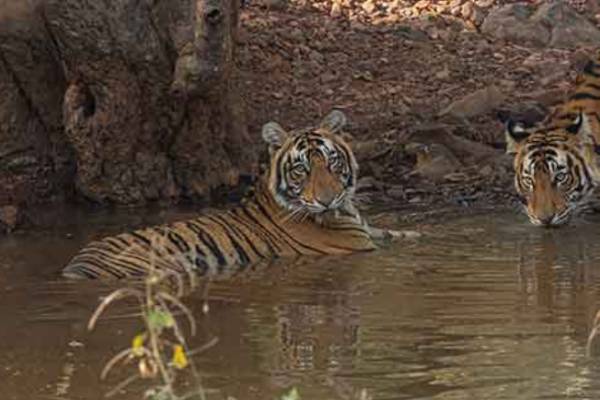If you’re someone who enjoys photography and has a love for wildlife, the Ranthambore Wildlife Photography Tour is an experience worth taking. Located in Rajasthan, India, Ranthambore National Park is one of the most popular places to spot tigers in their natural habitat. But this tour is not only about tigers—it’s about being close to nature, staying patient, and capturing real moments that tell a story.
Unlike studio photography or city-based shoots, wildlife photography in Ranthambore is unpredictable. You wake up early, ride into the forest, and keep your eyes wide open, never knowing what you’ll see. That’s what makes it so exciting.
What Makes Ranthambore Special?
Ranthambore stands out because of its unique combination of dense forest, open grasslands, lakes, and ancient ruins. These elements not only offer a wide variety of animals and birds but also add a different texture to your photographs. The dry deciduous forest allows better visibility, which increases your chances of spotting wild animals.
The biggest attraction here is, of course, the Royal Bengal Tiger. The tigers in Ranthambore are often seen near water bodies, on dirt tracks, or even resting close to the safari routes. They don’t shy away from vehicles, making it easier to take clear, natural photos without disturbing them.
What to Expect on the Tour
A typical Ranthambore Wildlife Photography Tour is spread over 3 to 5 days. You’ll go on two safaris each day—one in the early morning and one in the afternoon. The safaris take place in open jeeps called Gypsies (ideal for photography due to better movement) or larger vehicles called Canters.
The tour starts before sunrise. You reach the park gate, meet your guide and driver, and then enter the forest. What happens next is based on real-time wildlife movement. You listen to alarm calls, check the trails for pugmarks, and follow nature’s signals. Every moment in the jeep is filled with excitement and hope.
Whether you spot a tiger, a leopard hiding in the rocks, or a crocodile sunbathing near a lake, each sighting feels earned. That’s what gives value to every picture you click.
Animals and Birds to Photograph
While tigers are the main focus, Ranthambore has a lot more to offer. You can photograph:
- Leopards
- Sloth bears
- Nilgai (blue bulls)
- Sambar deer
- Spotted deer
- Wild boars
- Crocodiles
The park is also home to a wide range of birds. From peacocks dancing in the open fields to owls resting on tree branches, there’s something for every bird photographer. Kingfishers, eagles, parakeets, and vultures are commonly seen.
Even the ruins inside the park—like old watchtowers and parts of the Ranthambore Fort—offer interesting backgrounds for wildlife shots.
What to Carry on a Photography Tour
Wildlife photography requires more than just a camera. Here are some essentials you should bring along:
- A DSLR or mirrorless camera with a zoom lens (at least 300mm is recommended)
- Extra memory cards and fully charged batteries
- A monopod or a bean bag for camera support in the jeep
- Binoculars for spotting animals from a distance
- Neutral-colored clothing to blend with the surroundings
- A cap, sunglasses, sunscreen, and water for daytime safaris
Make sure your camera is always ready to shoot. Keep your settings suitable for sudden movement and changing light. Wildlife moments happen quickly—you may only get a second or two to press the shutter.
Best Time to Visit
The park is open from October to June. The best time for photography is between February and April. During these months, the weather is warm, the grass is shorter, and animals are often seen near water sources.
May and June also offer great opportunities, but the heat can be intense. Still, it’s a good time for tiger sightings, as they’re more active near water.
Simple Tips for Better Results
- Be patient. Sometimes you might sit for hours without a single sighting.
- Stay quiet during safaris. Sudden noise can scare animals away.
- Don’t focus only on tigers. Other animals and birds can give you memorable shots too.
- Talk to your guide—they often know recent tiger movements and active zones.
- Enjoy the full experience. Even without a sighting, the forest has its own rhythm and beauty.
Final Words
A Ranthambore Wildlife Photography Tour is not about comfort or luxury—it’s about being present in the wild, observing animal behavior, and capturing it truthfully. Whether you return with dozens of tiger shots or just a few pictures of deer in soft morning light, the experience leaves a lasting impact.
This tour is for those who don’t mind early mornings, dusty trails, and waiting in silence. In return, you get to witness real wildlife moments and improve your skills as a photographer in a way no classroom or guidebook ever could.
